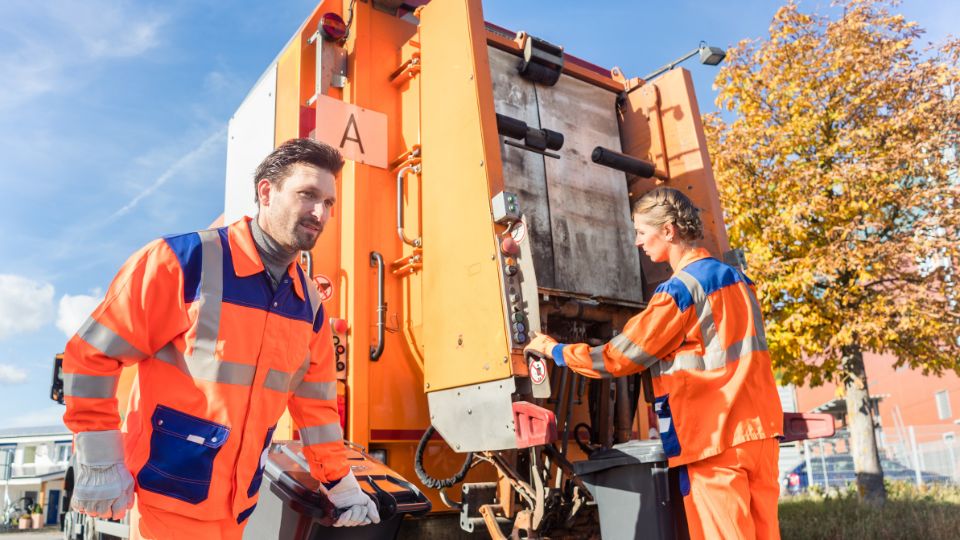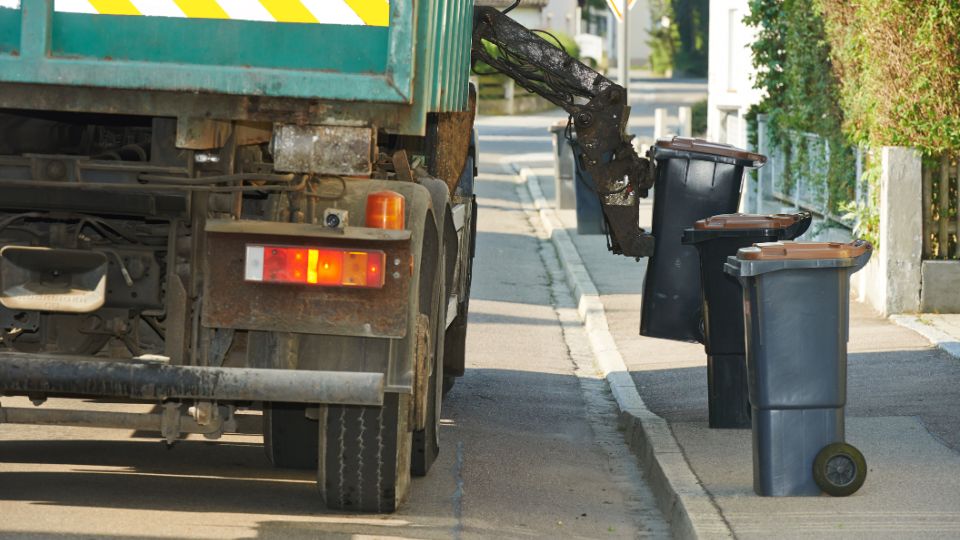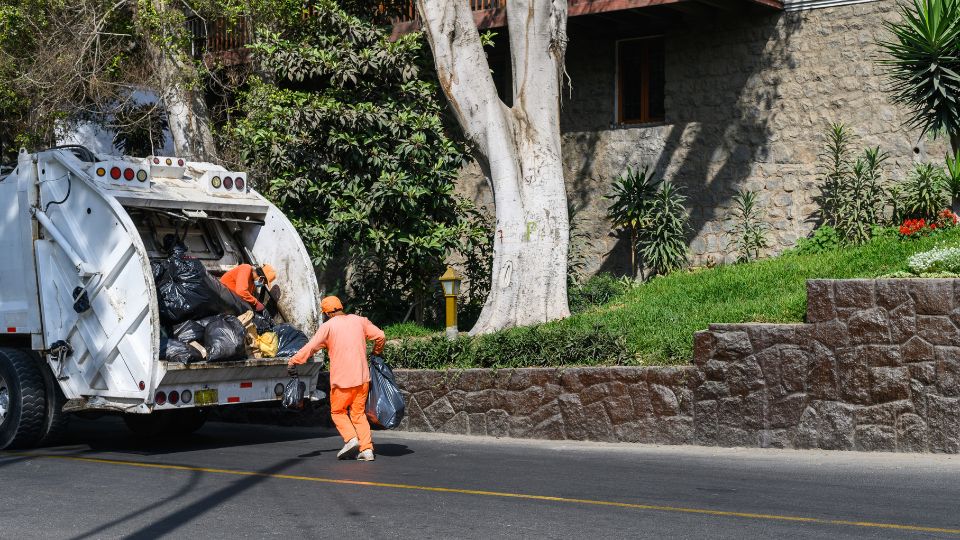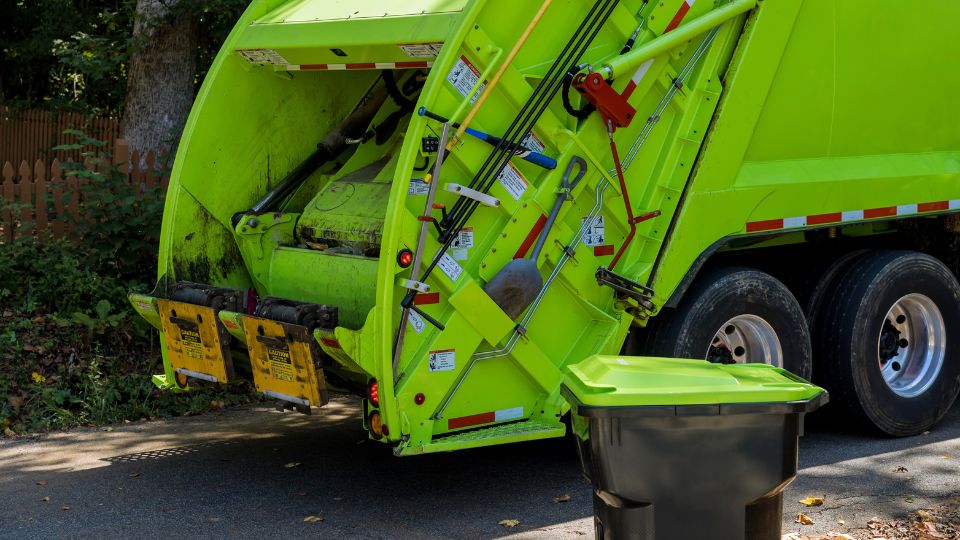
Quick Summary:
- Bin lorries are sophisticated machines with hydraulic systems, compactors, and advanced tech to efficiently handle urban waste, ensuring community cleanliness.
- Modern lorries use GPS for route optimization, sensors for waste detection, and eco-friendly fuels like CNG or electricity, blending innovation and efficiency in waste management.
Ever wondered how the bin lorry—the unsung hero of urban cleanliness—does its job? These machines are more complex than they seem, blending engineering ingenuity with practical functionality to keep our streets spotless.
Let’s explore the inner workings of a bin lorry to understand how it performs its role in managing our waste. From lifting and emptying bins to compacting rubbish, these vehicles play an important role in maintaining the hygiene and health of our environment.
Table of Contents:
- The Anatomy of a Bin Lorry
- The Collection Process
- How Are Bin Lorries Emptied?
- The Role of Technology
- Environmental Considerations
- The Human Element
- Conclusion
The Anatomy of a Bin Lorry
A bin lorry is built for efficiency and durability.
Here’s a breakdown of its main components:
- Chassis and Cab – The foundation of the lorry, housing the driver and controls.
- Hopper – The receptacle that initially collects the waste.
- Compactor Mechanism – Compresses the waste to maximise storage space.
- Hydraulic System – Powers the lifting and compacting functions.
- Storage Compartment – Holds the compacted waste until it can be emptied.
- Tailgate – The back end that opens to unload the waste at the disposal site.
The Collection Process

Lifting
Using hydraulic arms, the lorry lifts the bins and tips their contents into the hopper. Some advanced models even have automated arms that pick up the bins without human intervention.
Compacting
Once the waste is in the hopper, it’s pushed into the storage compartment by a compactor blade. This blade moves forward and backwards, compressing the trash to create more space.
Transporting
After collecting and compacting the waste from all designated bins, the lorry transports it to a waste disposal facility. The journey involves navigating urban landscapes, so designers build modern lorries for agility and efficiency.
Unloading
Upon reaching the disposal site, the tailgate of the lorry is opened. The compactor blade then pushes the waste out, either into a larger container or directly into the landfill or incinerator.
Loading
The process starts when the lorry arrives in your neighbourhood. Workers wheel the bins to the lorry and attach them to a lifting mechanism, accommodating various types such as general waste bins, recycling bins, and organic waste bins.
How Are Bin Lorries Emptied?

At designated waste disposal facilities, workers empty bin lorries by opening the tailgate and using the compactor blade to push the compacted waste out of the storage compartment.
Workers then deposit the waste into a larger container, landfill, or incinerator, depending on its type and the facility’s disposal methods.
The Role of Technology
Today’s bin lorries use advanced technologies to boost efficiency and streamline operations. GPS systems optimise collection routes, while onboard cameras assist drivers in manoeuvring and monitoring the loading process.
Some lorries come with sensors that actively detect the weight and type of waste, helping to collect data and plan waste management more effectively. These technological advancements can significantly improve operational efficiency and sustainability.
Ever Wondered Why Your General Waste and Recycling Bins Sometimes Go in the Same Wagon?
Many modern waste collection vehicles are designed with separate compartments to handle different types of waste. These compartments allow the truck to collect both general waste and recyclables in one trip while keeping them separate until they reach the sorting facility.
This design optimises collection efficiency and ensures that recyclables are not contaminated by general waste, making the sorting process smoother and more effective.
Environmental Considerations

Modern bin lorries are also designed with the environment in mind. Many are powered by cleaner fuels, such as compressed natural gas (CNG) or electricity, to reduce carbon emissions.
Some lorries are part of a larger waste management system that includes recycling and composting, helping to reduce the amount of waste sent to landfills.
The Human Element
While technology plays a significant role, the human element remains crucial. Skilled operators ensure that the lorries run smoothly, navigating tight urban streets and managing the complex machinery with precision. Their work is essential to maintaining public health and sanitation.
Conclusion
Bin lorries are a marvel of modern engineering, seamlessly integrating complex machinery and technology to perform a vital public service. Next time you see a bin lorry making its rounds, you’ll have a deeper appreciation for the intricate process that keeps our communities clean and livable.
These workhorses of waste management remind us that behind every clean street is a combination of innovation, efficiency, and human effort.







